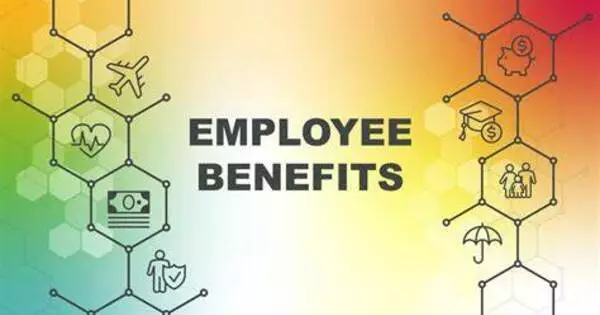Employee benefits are various types of pay and perks that companies provide to their employees in addition to their normal salary or earnings. It includes many sorts of non-wage remuneration provided to employees in addition to their regular earnings or salaries. It is also known as fringe benefits, perquisites, or perks. These perks are intended to improve employees’ general well-being and job satisfaction, as well as to attract and retain top talent.
A “salary packaging” or “salary exchange” agreement occurs when an employee exchanges (cash) salaries for some other type of perk. Most types of employee benefits are taxable to some extent in most countries.
Housing (employer-provided or employer-paid), furnished or unfurnished, with or without free utilities; group insurance (health, dental, life, etc.); disability income protection; retirement benefits; daycare; tuition reimbursement; sick leave; vacation (paid and unpaid); social security; profit sharing; employer student loan contributions; conveyancing; long service leave; domestic help (servants); and other specialized benefits are examples of these benefits.
Employee benefits can vary widely between companies and industries, but some common types include:
- Health Insurance: Many workplaces offer health insurance, which may include medical, dental, and vision coverage. This assists employees in covering the price of healthcare services while also promoting overall well-being.
- Retirement Plans: Employers frequently provide retirement savings plans, such as 401(k) or pension plans, to assist employees in saving for the future. To promote participation, certain businesses may offer employer matching contributions.
- Paid Time Off (PTO): Vacation days, holidays, sick leave, and personal days are all included in PTO. Offering paid time off allows employees to maintain a work-life balance while also attending to personal and family obligations.
- Life Insurance: Employers may provide life insurance coverage to employees, which pays out a lump sum to beneficiaries in the event of the employee’s death. This is often a component of a comprehensive benefits package.
- Employee Assistance Programs (EAPs): EAPs provide confidential counseling and support services to employees and their families for personal or work-related issues, such as mental health concerns, stress, or financial problems.
- Wellness Programs: Companies may provide wellness programs to support the physical and emotional health of their employees. Gym memberships, exercise classes, stress management workshops, and health tests are examples of such programs.
- Flexible Work Arrangements: Offering employees flexible work hours, remote work choices, or reduced workweeks can help them achieve a better work-life balance and boost job satisfaction.
It is critical to provide a complete and competitive benefits package in order to recruit and retain exceptional employees while also contributing to their overall job happiness and well-being. The precise perks provided can vary depending on the sector, company size, and staff preferences.
















